List of Authors
>>About this blog
Recent blog post
|
[Sam]
January 30, 2017 12:00

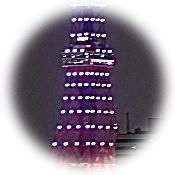 The "Special Light Up" of Tokyo Tower, which is lit according to weekends, anniversaries, events, promotions, etc. The "Special Light Up" of Tokyo Tower, which is lit according to weekends, anniversaries, events, promotions, etc.
In January, a limited time from 20:00 to 22:00 on Saturday, July 14, 21 and 28, diamond veil <white diamonds>> It was lit.
At the 50th anniversary, Diamond Vere was designed and started by lighting designer Mikiko Ishii with the feeling of "giving diamonds to a 50-year-old woman in light of its shape that can be parable to women."
The total number of lights shining outside from the frame is 276.
Depending on the pattern, each of the 17 levels of light is transformed into seven colors with masage for each color, but this time, a noble white glow with the message of "eternity" and "inheritance".
In the clear winter air, you can clearly see "Diamond Ver <White Diamond>" from the Sumida River Terrace in Kachidoki through the Tsukiji Market.
By the way, from the sunset of the day to 20:00, from 22:00 to the dawn of the next day, the standard "landmark light (winter version)" is lit.
[Sam]
January 25, 2017 14:00
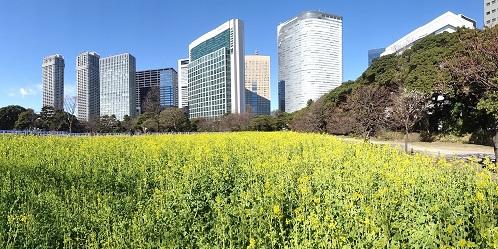
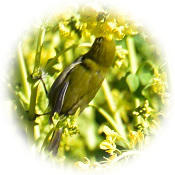 The cold weather continues to be severe in the cold, but in the Hamarikyu Garden, the bird repellent net in the canola flower field has been removed, and the sign of spring has gradually increased. The cold weather continues to be severe in the cold, but in the Hamarikyu Garden, the bird repellent net in the canola flower field has been removed, and the sign of spring has gradually increased.
canola flower hears that about 300,000 trees are planted in a flower garden of about 3,000 m2.
In the past, it seems that seeds were sown all at once, but for a long time, the seeds are sown in two plots to have visitors enjoy flowering, and the seeds are sown at different times.
The section on the left after entering from the entrance to Ote-mon gate is where seeds were sown on October 25, last year. The height was quite stretched, and the bird repellent net was removed.
The plot on the right seems to have been sown about half a month later, but it is still curing.
On this day, Japanese white-eye came to suck the nectar.
[Sam]
January 24, 2017 18:00
 "Ginza, Study Exhibition for the Next 100 Years" is currently being held at Ginza Retro Gallery MUSEE (Ginza 1). "Ginza, Study Exhibition for the Next 100 Years" is currently being held at Ginza Retro Gallery MUSEE (Ginza 1).
(until February 19)
The gallery opened in 2013 after preserving and renovating the retro building completed in 1932.
This project is an architectural exhibition that considers the cityscape of Ginza, taking a bird's-eye view of the history of Ginza and the future.
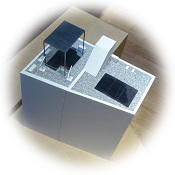 I hear that Ginza (next 100 years) is an attempt to consider and study with visitors under the theme of "eliciting the potential of MUSSE". I hear that Ginza (next 100 years) is an attempt to consider and study with visitors under the theme of "eliciting the potential of MUSSE".
By the way, "study" means repeating examination for the completion of architecture.
Each floor and the rooftop are displayed with different themes.
In "Visit Ginza" on the 1st floor, we introduce photo postcards of the scenery of the streets of the Meiji, Taisho and Showa eras.
In "Question of Ginza" on the 2nd floor, architectural models of the gallery's virtual renovation plan will be exhibited.
In "Tactile Ginza" on the 3rd floor, a 1/1000 model that maps existing retro buildings on a map will be exhibited.
On the rooftop "Look up at Ginza", an installation "Platform" using two mirrors that symbolize the skyscraper and the spread of the sky is set up.
[Sam]
January 21, 2017 09:00
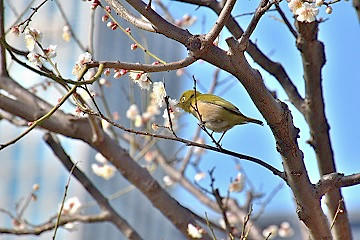 Japanese white-eye visits the early blooming plums of Hamarikyu Onshi Garden and is sucking honey. Japanese white-eye visits the early blooming plums of Hamarikyu Onshi Garden and is sucking honey.
A scene suitable for early spring.
Japanese white-eye belongs to the Japanese white-eye family of sparrows and is slightly smaller than sparrows, and is considered a resident bird or drifting bird.
From the head to the waist is yellowish green, from the throat to the chest is yellow, and from the chest to the abdomen are pale brown.
It is characterized by the white eye ring around the eyes, and it is the origin of the name and has a love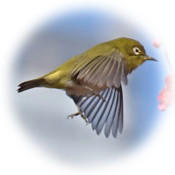 ly impression. ly impression.
Like other birds, Japanese white-eye eats insects in spring and summer and fruits in autumn and winter, but honey is also a favorite, and is said to carry honey entangled with a brush-shaped tongue.
It is said that the vigilance is slower than the ugly that also tells the spring, and there are many opportunities to see flowers and trees such as garden trees and street trees in satoyama and urban areas, and to see the rumbling of the ground called Chichichi, and people have long been familiar with people. Was.
One of Japanese white-eye's characteristic actions is the habit of stopping side by side as if pushing on the tree, and I hear that it became the etymology of "a lot of things lined up without gaps" and "a lot of things concentrated".
[Sam]
January 19, 2017 16:00
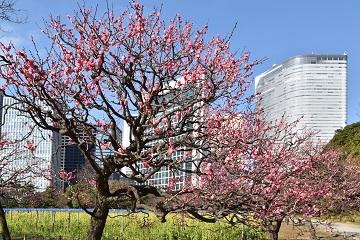 On January 10, the Tokyo Regional Meteorological Observatory reported one of the Japan Meteorological Agency's biological seasonal observation information, "Plum Flowering". On January 10, the Tokyo Regional Meteorological Observatory reported one of the Japan Meteorological Agency's biological seasonal observation information, "Plum Flowering".
16 days earlier than normal, the same day as last year.
The news of the flowering of Bairin in the Hamarikyu Onshi Garden has not yet been heard, but weeping plums from major Kadoguchi and early blooming "Yae Koume", "Koshu Minimum", and "Yae Noume", which are beside the flower garden, have begun to bloom.
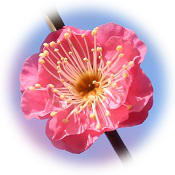 Sir. Sir.
When the garden was a separate residence of the Tokugawa Shogunate, which was called the Hamagoten, many plum trees were planted and are said to have been full of a fragrant scent.
Currently, there are about 80 plums in the park in Umebayashi, about 10 varieties in total, about 130 plums.
The canola flower field, which was sown on October 25 last year, is covered with a net and is still curing, but the park is steadily showing signs of spring coming.
[Sam]
January 16, 2017 09:00
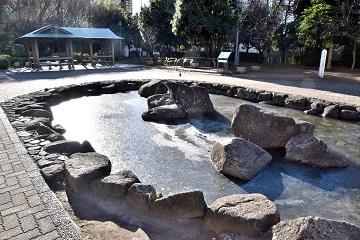 On January 12, the Tokyo Regional Meteorological Observatory reported "first ice". On January 12, the Tokyo Regional Meteorological Observatory reported "first ice".
The first ice observed every winter is "first ice", and that day is the first day of freezing.
Since December, Tokyo's minimum temperature of 0 ° C is counted for three days, but the first ice was not observed, and the lowest temperature dropped to 0 ° C for the first time in five days, and finally the first ice was observed for the fourth time.
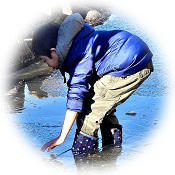 26 days later than normal, the second slowest record in the history of observation, after January 13 of last year. 26 days later than normal, the second slowest record in the history of observation, after January 13 of last year.
Next, on January 15th, the coldest coldest winter season flowed over Japan, and snow continued to fall over a wide area from northern Japan to the Sea of Japan side of West Japan due to the strong winter-type pressure pattern.
The lowest temperature in Tokyo this day was 2.3°C.
The pond at Tsukuda Park was also covered with ice.
But the children are fine.
He was breaking the ice and making a call.
|
Links
|

 The "Special Light Up" of Tokyo Tower, which is lit according to weekends, anniversaries, events, promotions, etc.
The "Special Light Up" of Tokyo Tower, which is lit according to weekends, anniversaries, events, promotions, etc.
 The cold weather continues to be severe in the cold, but in the Hamarikyu Garden, the bird repellent net in the canola flower field has been removed, and the sign of spring has gradually increased.
The cold weather continues to be severe in the cold, but in the Hamarikyu Garden, the bird repellent net in the canola flower field has been removed, and the sign of spring has gradually increased. "Ginza, Study Exhibition for the Next 100 Years" is currently being held at Ginza Retro Gallery MUSEE (Ginza 1).
"Ginza, Study Exhibition for the Next 100 Years" is currently being held at Ginza Retro Gallery MUSEE (Ginza 1). I hear that Ginza (next 100 years) is an attempt to consider and study with visitors under the theme of "eliciting the potential of MUSSE".
I hear that Ginza (next 100 years) is an attempt to consider and study with visitors under the theme of "eliciting the potential of MUSSE". Japanese white-eye visits the early blooming plums of Hamarikyu Onshi Garden and is sucking honey.
Japanese white-eye visits the early blooming plums of Hamarikyu Onshi Garden and is sucking honey. ly impression.
ly impression. On January 10, the Tokyo Regional Meteorological Observatory reported one of the Japan Meteorological Agency's biological seasonal observation information, "Plum Flowering".
On January 10, the Tokyo Regional Meteorological Observatory reported one of the Japan Meteorological Agency's biological seasonal observation information, "Plum Flowering". Sir.
Sir. On January 12, the Tokyo Regional Meteorological Observatory reported "first ice".
On January 12, the Tokyo Regional Meteorological Observatory reported "first ice". 26 days later than normal, the second slowest record in the history of observation, after January 13 of last year.
26 days later than normal, the second slowest record in the history of observation, after January 13 of last year.
